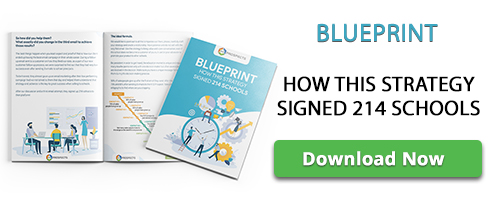Reach New K-12 Customers with Segmentation Email Marketing


You’ve probably heard about segmentation in email marketing. What is it? Why is it so important? Segmentation is one of the most critical components to a successful email marketing strategy and boosting sales. And it’s all about personalization.
Choosing and developing good segments is based on engagement and relationships. It is very important to understand how to comb through your prospects and find the most promising segments. You can do this by learning more about your customers–their interests, habits, and needs–so that you can provide them with the best possible solutions.
Then comes segmentation, which can improve your email marketing results and ultimately lead to more customers and sales.
1. Begin with a clean K-12 List
If you have ever sat down to start a task without a clear plan or fresh list of resources, you know how much time and effort is wasted in just getting prepared. Segmentation is no different.
Preparing your database by keeping it updated and accurate is a very important step. It can be tempting to skip right to email marketing but creating a strong foundation, the database, is crucial. You won’t reach your goals without it.
If you go through your database to update it once a month, you will be ready for the next steps of segmentation. You can do this by removing unsubscribed or old contacts, including the emails that are no longer active. If your email bounce rate is more than 3-5%, you probably need to invest the time to update your database.
Keeping your database clean and fresh will save you time, energy, and money. It will also make sure that your emails don’t automatically end up in someone’s junk folder, potentially missing out on opening communication with a new customer.
2. Segmentation based on need
Each customer has a unique need. As a vendor, part of your role is to research and understand those needs. Customer’s priorities are based on the challenges that they face within their school or district. This will dictate what they buy from vendors and the products and services they bring into their schools.
Needs are also based on the role of the customer. A Superintendent and a Curriculum Coordinator have different needs and responsibilities within their district or school. If you want to effectively cultivate relationships with each individual, you first need to understand what they are looking for from new products and services. Your email marketing messages should take these individual personas into account and be tailored for each.
A simple poll can be used to learn more about the needs of each email recipient. A digital curriculum and textbook company sent emails to potential customers and asked them to choose which of the two they would be interested in. By looking at each recipient’s response, they learned who was interested in the digital curriculum and who wanted to learn more about new textbooks.
Their email marketing became more targeted and effective.
3. Segmentation based on demographics
Segmentation can also be used to differentiate based on the demographics of schools and districts. Rural areas have different needs and available funding than urban areas. Enrollment size also plays a major role in defining the needs and budgets of each school. You can target schools and districts that fit with what your product provides and that have the appropriate budget.
Demographic information for our school and district contacts is available through K12Prospect.
4. Current customers to speak to others
Current customers are a trusted, valuable resource to market your products and services to new contacts. Success stories from happy customers can reach nearby schools and districts. Once a potential customer sees how much your product helps their colleagues, they will be more likely to look into and even purchase it for use in their own school. We recommend reaching out to schools and districts within a 100-mile radius of each current customer.
If you have a group of nearby schools using your product, you can leverage that to get more customers. Chances are that their colleagues have seen your product in action and heard the success stories. Segmentation to market to schools within the same state is another great strategy, as they are all following the same state learning standards.
Word-of-mouth marketing between Principals, Superintendents, and other stakeholders is a valuable resource. Education is a small industry and professionals rely on trusted recommendations from their colleagues at other school and districts.
Just as with other marketing strategies, segmentation is meant to increase customer engagement and sales.
Wrap up
Starting with a fresh, updated database and planning out segmentations will result in individualized email marketing that reaches each customer on a personal level. It shows them that you have taken the time and effort to understand what they need, what budget they are working with, and are ready to help them and their school.
48% of customers and potential prospects have failed to work with a company because of targeted content. Segmentation can keep you from losing out on potential new sales. K12Prospect can help you create an individualized email marketing strategy that uses segmentation effectively. Targeted content, rather than broad, will help you reach new customers and grow your business.


